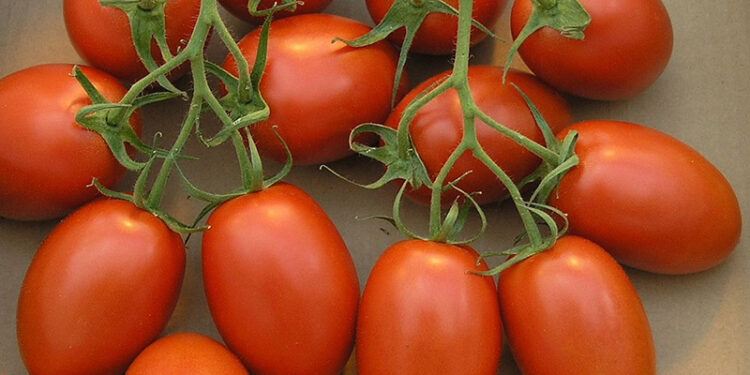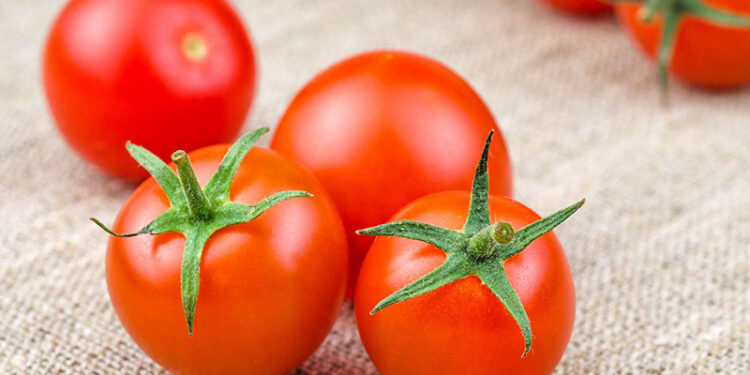Wondering if tomatoes fit into a low-FODMAP diet? The good news is, you don’t have to avoid tomatoes completely. The important thing is to pay attention to the type of tomato. Choose the right type and portion size. Some tomato varieties are lower in FODMAPs, which are certainly more suitable for people with IBS.
In this article, we’ll focus on which tomato varieties are suitable or low in FODMAPs, so many people can enjoy them without worry. So, before you try consuming tomatoes or making sauces, try reading this article first. We hope this is helpful!
What Is FODMAP?
FODMAP stands for Fermentable Oligosaccharides, Disaccharides, Monosaccharides, and Polyols. This is a group of carbohydrates (sugars) that are difficult for some people to digest, especially those with Irritable Bowel Syndrome (IBS) or other digestive issues. [allieddigestivehealth]
Key Points:
Tomatoes vary, and some of these are low FODMAP when eaten in small portions, so it depends on the portion size and the variety of tomatoes.
We know that tomatoes vary widely, and there are many types of tomatoes and their products. This means they all have different FODMAPs. So, you need to know whether you’re eating regular tomatoes, sun-dried tomatoes, or tomato paste.
The FODMAP content in tomatoes is primarily due to fructose, a type of short-chain carbohydrate found in fruit that is difficult for the human digestive system to break down, especially in some individuals. These contents are different from one type of tomato to another.
The taste of fresh, juicy tomatoes is unbeatable in a quick and simple dish. However, when it comes to FODMAPs, not all tomatoes are equal. Among the many tomato varieties are regular tomatoes, Roma tomatoes, cherry tomatoes, Grape Tomatoes, and more. These tomato varieties have been tested for FODMAP levels – as listed in the Monash University FODMAP Diet App – Some are low FODMAP and some of them are high in FODMAP.
To easily understand this, I have created a table about this content comparison in tomatoes. Let’s look at this comparison table of low FODMAP vs high FODMAP tomatoes.
Comparison Table of Low FODMAP Vs High FODMAP Tomatoes
| Tomato Type | FODMAP Content | Low FODMAP Serving Size | High FODMAP Risk |
|---|---|---|---|
| Common (Round) Tomato | Low FODMAP | 1 medium (≈ 123 g) | Larger portions may increase fructose load |
| Roma / Plum Tomato | Low FODMAP | 1 medium (≈ 75 g) | Excessive amounts can trigger symptoms |
| Cherry Tomatoes | Moderate FODMAP | 3–4 tomatoes (≈ 45 g) | High in fructose when eaten in larger servings |
| Grape Tomatoes | Moderate FODMAP | 5 tomatoes (≈ 75 g) | Larger servings may become high FODMAP |
| Sun-dried Tomatoes | High FODMAP | Only 2 pieces (≈ 16 g) | High in fructose and galacto-oligosaccharides (GOS) |
| Tomato Paste / Puree | High FODMAP | 2 tbsp (≈ 28 g) | Concentrated → higher FODMAPs per serving |
| Canned Tomatoes | Low FODMAP | ½ cup (≈ 100 g) | Watch for added ingredients like onion or garlic |
Look at the Table for the Safe Amount of Fresh Tomatoes for FODMAPs
| Tomato Type | Low FODMAP Serving Size | Notes |
|---|---|---|
| Common Tomato | ½ small tomato (≈ 65 g) | Becomes moderate to high FODMAP above 75 g |
| Roma Tomato | 48 g (≈ ⅔ of a Roma tomato) | Safe in small portions |
| Cherry Tomato | 3 pieces (≈ 45 g) | More than 3 becomes moderate to high FODMAP |
| Truss Tomato | ½ tomato (≈ 69 g) | Similar limits as common tomato |
We can explain the table as below:
- Common tomatoes: These tomatoes are available year-round and have become a staple in nearly every household. Half a small tomato (65 grams) is considered low-FODMAP. However, after 75 grams, the tomatoes become moderate to high-FODMAP.
- Roma tomatoes: Also known as plum tomatoes, Roma tomatoes are low-FODMAP at 48 grams per serving, which is about two-thirds of a Roma tomato.
- Cherry tomatoes: Perhaps an easy way to enjoy tomatoes, cherry tomatoes are only low-FODMAP at three cherry tomatoes (45 grams). That’s not much if you’re a fan! Any more than that, and they become moderate to high-FODMAP.
- Truss tomatoes: Like other tomatoes, truss tomatoes are low in FODMAP at half a tomato (69g).
As with other foods, determining the FODMAP content of a food depends on its shape and portion size. Therefore, different varieties of tomatoes and tomato products will have different FODMAP levels.
Popular Types of Tomato Products
- Tomato sauce: Tomato sauce can add a sweet and sour flavor to pies and fries. However, you should be mindful of your portions, as a small serving of tomato sauce (16g) is low in FODMAPs.
- Tomato paste: This is a concentrated, low-FODMAP version of tomato sauce, with a 2-tablespoon (36g) serving providing 28 grams.
- Canned tomatoes: There are usually two types of canned tomatoes: plum tomatoes and round tomatoes. Both are low in FODMAPs, with a 1/2 cup serving containing 100 grams.
- Sun-dried tomatoes: If you don’t like the concentrated tomatoes commonly used in pasta and poizza, you can use these dried tomatoes. Three tomatoes contain about 8 grams.
- Tomato puree: This is an ideal type of tomato for stews and soups. They are low in FODMAPs, with 2 tablespoons (36g) serving providing 100 grams of fructose. Any more than that can contain high or moderate amounts of fructose.
- Ketchup: Don’t confuse it with tomato sauce; ketchup is a popular condiment often sweetened with high-fructose corn syrup or sucrose. It’s considered low-FODMAP at 13g. [alittlebityummy]
Tomato-based pasta sauces are rich in garlic and onion. This is high in FODMAPs, with 1/4 cup containing the FODMAP culprits galacto-oligosaccharides and fructans.
Tomato sauces containing garlic and onion are low in FODMAPs in small portions, between 25g and 1 tablespoon.
Tomato juice-based vegetables, in 200ml, are considered low-FODMAP, so you can safely enjoy a glass.
More to see:
FODMAP Summary of Tomatoes
You can enjoy tomatoes on a FODMAP diet, but you need to be mindful of portion sizes. Although tomatoes are generally low in FODMAPs, it’s important to be mindful of portion sizes. You can enjoy tomato sauce, tomato paste, and tomato chutney in moderation.
If you’re experiencing gut symptoms and haven’t been recommended a FODMAP diet, it’s best to start with a gut management program first.
















